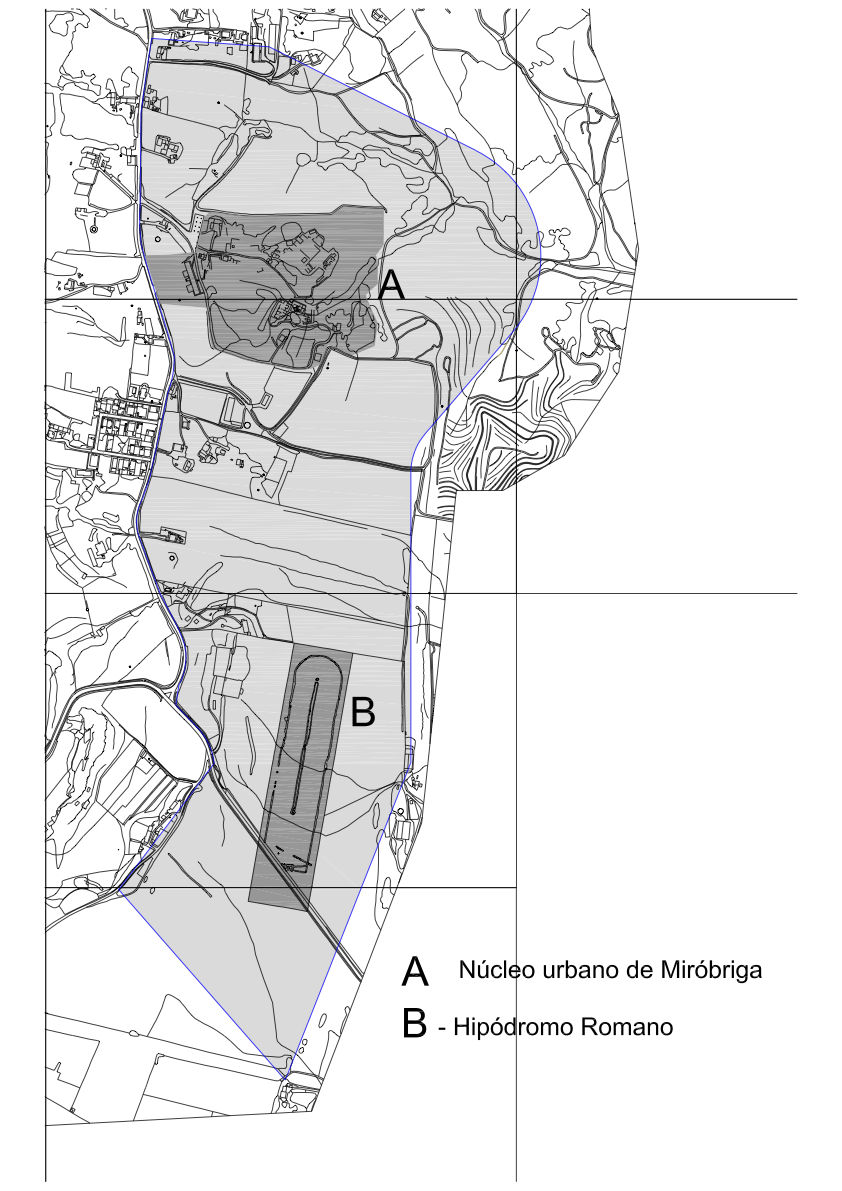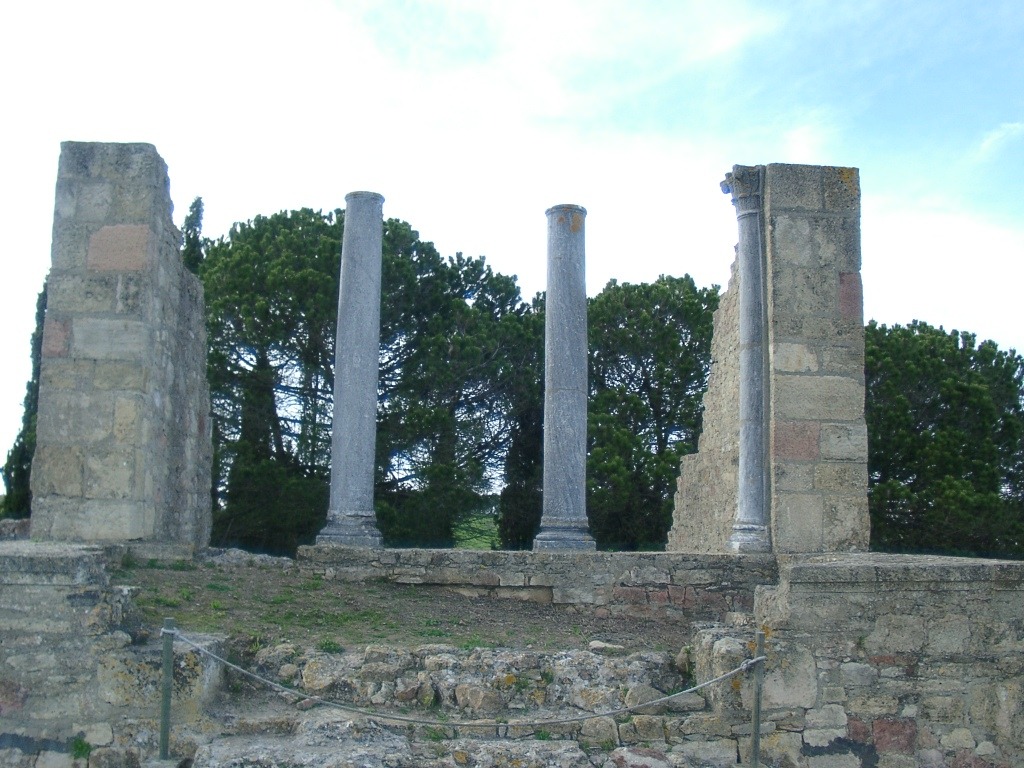Santiago do Cacém
Roman City of Miróbriga
38º00'36.59"N / 8º41'09.00"O
Opening Time
Tuesday to Saturday: 9 a.m.-12.30 p.m. and 2 p.m.-5.30 p.m.
Sunday: 9 a.m.-12 p.m. and 2 p.m. -5.30 p.m.
Closed on the municipal holiday (July 25) and January 1
Easter Sunday, May 1, December 25.
About
Roman City of Miróbriga
André de Resende was the first to mention the ruins of the Roman City of Miróbriga, in the 16th century. The first archaeological excavations occurred at the beginning of the 19th century at the request of Friar Manuel do Cenáculo, Bishop of Beja at the time. After that, there were other campaigns, like the one led by Cruz da Silva (1922-1948) or the ones directed by Fernando de Almeida (in the 1960s). In the 1980s, a Luso-American team worked here, and in the 1990s, Filomena Barata led a recovery project on the site.
Archaeology has confirmed that there was already an indigenous settlement at the site in the Iron Age (5th/6th centuries B.C. to 2nd century B.C.), which would later become this Roman city. During the Flavian dynasty (second half of the 1st century A.D.), this urban space was distinguished with the status of Roman municipality. According to estimates, it reached an area of 10-12 hectares in its golden age (from the second half of the 1st century A.D. to the first half of the 4th century A.D.).
In general terms, this urban space is organised in two nuclei. The first, located to the North, encompasses a forum (public square), with a central temple dedicated to the imperial cult with a portico on each side and surrounded by several public buildings (basilica and curia, for example), two thermal complexes, a vast residential area and many tabernae (stores). The second was located approximately 650 meters South of the forum and corresponds to a large entertainment building, a circus, or a hippodrome; built in the 2nd century A.D., it is 359 meters long by 77.5 meters wide. In fact, this is one of three buildings of this kind so far discovered in the present-day Portuguese territory, in addition to the one in Olissipo (Lisboa) and Balsa (Luz de Tavira).
The city declined progressively between the end of the 5th century A.D. and the beginning of the 6th century A.D.
Access
Prepare your visit
The Roman City of Miróbriga has a Reception and Interpretation Centre at the entrance, which can be visited by people with reduced mobility (wheelchairs and baby strollers).
Phone: 269 818 460
Ticket price:
Adults – 3€
Seniors – 1.5€
Children under 12 – Free
The Circus/Hippodrome cannot be visited.
Reduced mobility
The archaeological site is partially accessible to people with reduced mobility (wheelchairs and baby strollers). Some circulation areas paved with stone may present difficulties. Children should always be accompanied by a responsible adult.
Guided tours
Guided tours for groups of over 15 people are possible. They must be BOOKED IN ADVANCE and depend on service availability.
Support

RESEARCH
Bibliography & useful links
ALARCÃO, Jorge de (1988). Roman Portugal: Gazetteer, Volume II, Fasc. 3 – Évora, Faro & Lagos. Aris & Philips LTD, Warminster, pp. 173-174.
BARATA, Maria Filomena (2001a). Roteiros da Arqueologia Portuguesa, 7 – Miróbriga. Ruínas Romanas, Instituto Português do Património Arquitectónico (IPPAR), Lisboa.
BARATA, Maria Filomena (2001b). O Sítio Arqueológico de Miróbriga. In Património / Estudos, n.º 1, Instituto Português do Património Arquitectónico, Lisboa, pp. 46-48.
BARATA, Maria Filomena; VALE, Fernanda (2010). Miróbriga, o Tempo ao longo do Tempo. História e Historiografia. Investigação em Miróbriga. Câmara Municipal de Santiago do Cacém, Santiago do Cacém.
QUARESMA, José Carlos; FELÍCIO, Catarina; SOUSA, Filipe; GADANHO, André; GUIMARÃES, Raquel Alexandra dos Santos; SILVA, Rodrigo Banha da (2020). Mirobriga (Santiago do Cacém): novos desenvolvimentos científicos, entre análises e novas escavações. In Revista Portuguesa de Arqueologia, 23, Direção-Geral do Património Cultural, Lisboa, pp. 121-130. Disponível em: Consultar Artigo Completo → [Consultado a 17/05/2023].
RAPOSO, Jorge (2001). Sítios arqueológicos visitáveis em Portugal. In Almadan, 2ª série, 10, Almada, pp. 100-157. Disponível em: Consultar Artigo Completo → [Consultado a 22 de março de 2023].
https://arqueologia.patrimoniocultural.pt/index.php?sid=visitaveis&subsid=47524
http://www.monumentos.gov.pt/site/app_pagesuser/sipa.aspx?id=4076
https://www.patrimoniocultural.gov.pt/pt/patrimonio/itinerarios/alentejo-algarve/01/
https://www.cm-santiagocacem.pt/municipio/sitio-arqueologico-de-mirobriga/
https://culturaportugal.gov.pt/pt/conhecer/local/_drcalentejo/sitio-arqueologico-de-mirobriga/
https://clenardus.com/mirobriga/
https://www.associacaocultural-stc.pt/ruinas-de-mirobriga.html



